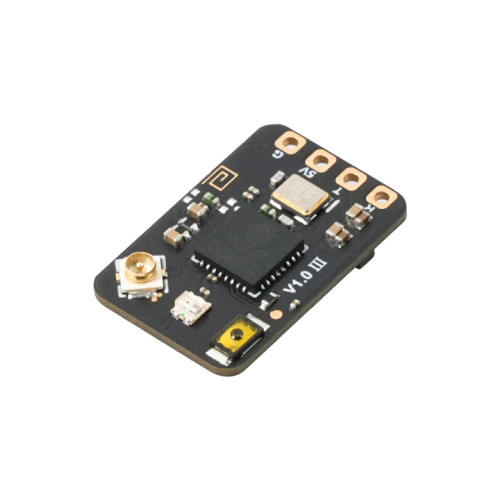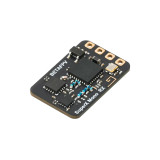BetaFPV Super-D ELRS 915MHZ RX
The BETAFPV SuperD ELRS Receiver is the first True Diversity Receiver that applies two antennas, dual receiver chains, and TCXO (temperature-compensated crystal oscillator) technology, achieving a super accurate frequency rate and excellent performance in extreme temperature environments. It offers 2.4GHz and 915MHz versions and greatly fulfills the requirements of reliability for long-range flying, aerial photography, or FPV freestyle tricks.
Features
- Suitable for FPV drones, fixed-wing aircraft, and other FPV applications
- Omni-directional Signal Transmission
- Latest ExpressLRS Compatibility
- Clean layout for easy soldering
- ExpressLRS V3.0.0 firmware
- Long-range flying scenarios
- Frequency Band Diversity
- Two Dipole T antennas
- Versatile Application
- Ultralight Design
- Lightweight
- Reliability

FIRST TRUE DIVERSITY RECEIVER WITH TCXO
SuperD ELRS 2.4GHz Diversity Receiver is built-in with a TCXO (temperature-compensated crystal oscillator), which is shared by two RF chips for a super accurate clock source. The true diversity receiver, including two RF chips and PA+LNA, will generate a large amount of heat when working. With the high-quality TCXO, it can withstand extreme temperatures with no fear of heat and cold, continuously outputting an accurate frequency for long-range flight.
BETAFPV EXPRESS_LRS RECEIVERS
SuperD ELRS 2.4GHz Diversity Receiver has dual RF receiver chains with two antennas, ensuring longer and more stable flying for FPV drones and RC airplanes. Choosing a suitable receiver to fly a quadcopter or other RC models is very important. BETAFPV ExpressLRS Receivers, including ELRS Lite, Nano, Micro, and the newest SuperD, greatly fulfill pilots' requirements for FPV flying.
CONFIGURATION & BINDING
ExpressLRS uses the Crossfire serial protocol (AKA CRSF protocol) to communicate between the SuperD diversity receiver and the flight controller board. Taking the flight controller using Betaflight firmware as an example, let's introduce its wiring and port configuration.
The connection between the SuperD diversity receiver and the flight controller is shown in the figure below. Connect the flight controller to the Betaflight Configurator for basic configuration. First, on the "Ports" page, enable the flight controller serial port (take UART1 as an example) as "Serial Rx". On the configuration page, set Receiver Mode to Serial (via UART) and Serial Receiver Provider to CRSF. The default firmware of the SuperD diversity receiver uses the ExpressLRS V3.0.0 protocol and has no preset binding phrase. Therefore, the firmware version of the transmitter module must be ExpressLRS V3.0.0 or later versions. Both the receiver and transmitter module should not have any binding phrase.
To bind the receiver:
1. Power on and off the receiver 3 times, pausing 2 seconds each time to enter binding mode.
2. When the indicator starts fast blinking with orange twice, the receiver is in binding mode.
3. Enter the radio or transmitter module's binding mode to bind with the receiver. If the indicator turns solid, it indicates that the device has been bound successfully.
Specifications
- Item: BETAFPV SuperD ELRS 915MHz Diversity Receiver
- MCU: ESP32 PICO D4, dual SX1280(SX1281)
- Antenna Connector: IPEX MHF 1/U.FL
- Weight (excluding antenna): 1.2g
- Input Voltage: +5V DC @ “+” pad
- RF Frequency: 915MHz FCC
- Telemetry Power: 17dBm
- PCB Size: 22mm x 14mm
- Receiver Protocol: CRSF
IMPORTANT NOTES
- After binding once, the receiver will remember the autosaved binding phrase and device. Further restarting of the device will automatically bind without the need for a rebinding process.
Package Contents
- 1x BETAFPV SuperD ELRS 915MHz Diversity Receiver
- 1x Instruction manual
- 2x Heat shrink tubing
- 1x 4-pin wire harness
- 2x 2.4GHz T antenna
- 1x 4-pin header
- Receiver Type:
- ExpressLRS 915











